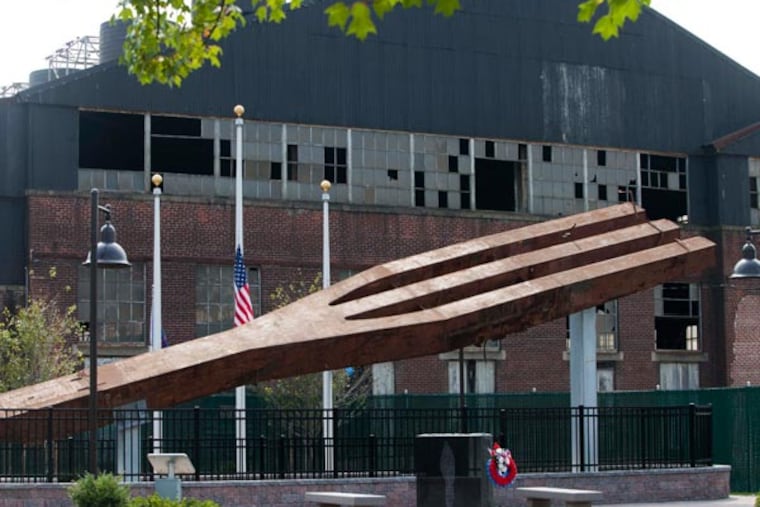Coatesville unveils its steel memorial from 9/11
COATESVILLE Less than a month after the 9/11 attacks, a group of steelworkers met with Scott Huston in his Coatesville office.

COATESVILLE Less than a month after the 9/11 attacks, a group of steelworkers met with Scott Huston in his Coatesville office.
Groups around the country had been clamoring for artifacts from the World Trade Center rubble.
The union members wanted to make sure that Huston, whose family founded Lukens Steel and who runs a museum dedicated to the industry's legacy, knew that his family's Coatesville mill "put steel into the World Trade Center," he said Wednesday.
As it turned out, the "steel trees" made at the Lukens mill - enormous beams that resemble giant tuning forks - supported the first nine floors of the World Trade Center, visible from the tower lobbies.
In the aftermath of the attacks, they became iconic images of the collapse, sticking out of the ruins at odd angles.
For nearly a decade, Coatesville residents worked to bring them back home.
At a ceremony Wednesday, Huston and local dignitaries unveiled one of 10 steel trees they returned to the city three years ago - a first step for what they hope will be a permanent memorial for both 9/11 victims and local steelworkers who lost their lives on the job.
At times, "we weren't sure we were going to be able to pull it off," Huston said.
For years, the trees languished in an airplane hangar at New York's John F. Kennedy International Airport, along with other remnants from the attacks - crumpled police cruisers, a battered subway car, a bike rack with a row of bikes whose owners would never claim them.
Everything was considered evidence, part of a crime scene 16 acres wide, and unable to be released to the public.
Huston and the local charity he now runs, the Graystone Society, waited patiently.
"Our major claim was that we made these things," said Eugene DiOrio, the society's founder.
Then, in 2010, the red tape cleared: the Port Authority of New York and New Jersey allowed the society to take 10 of the 19 trees back to Coatesville. And at Wednesday's ceremony, speakers took the stage in the shadow of one of the trees, now standing outside Coatesville's National Iron and Steel Heritage Museum.
Former U.S. Rep. Joe Sestak spoke of running toward the Pentagon from a mile down the road on Sept. 11, 2001, only to see that his former office had been destroyed in the attack.
"Men I knew never came out," he said.
Five former Chester County residents were killed in the World Trade Center, and organizers read each name as a small crowd listened in silence.
Huston was the last person to speak. He talked about walking into the hangar at JFK to claim the steel his family had manufactured. The trees, he said, took up half the space in the hangar. But it was the little things that stopped him - the unclaimed bikes in the rack, the crushed cab on a fire truck.
"That's the permanence of it," he said. "You're separated from these things - and to get there and touch them, to connect in my own way, is very emotional."